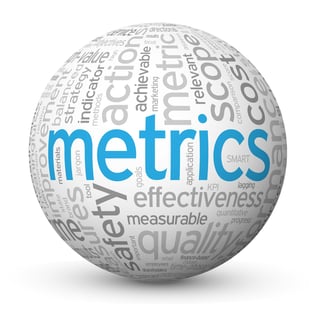How practice managers can improve return on medical assets

In a competitive marketplace where shareholders have high expectations, it is incumbent on any medical practice management team to ensure that they are getting the most efficient use from their theatre asset. But how do you know if you are maximising the return on your medical assets and, if not, what can you do about it?
Practice Managers need reliable, timely data
Before recommendations and changes can be made it is important to assess the current situation. This way a baseline performance can be determined against which the impact of change can be measured. The logical first step therefore is to assess the practice' current level of return. In doing this, it is crucial to consider 3 factors:
- Size of the Data Sample
- Quality of the Data Sample
- Time Required for Data Collection
Working with too small a data sample or a low quality one carries the risk of basing your decisions on flawed assumptions. Also, if it takes several months to collect a sufficient sample size then, by the time you get to use it, it could be less relevant or, worse, too late for corrective action to have any effect. It is tantamount to driving your car down the highway and looking in the revision mirror for guidance on where to turn next.
Top Down or Bottom Up?
A significant disadvantage of working with restricted data samples is that you only obtain a ‘Top Down’ view based on averages and aggregates. Activity Based Data, in contrast, is being collected at point of activity. In a healthcare setting for example, as each interaction with the patient occurs, you collect the cost of inputs required to treat that patient.
This gives a medical practice manager a ‘Bottom Up’ view of the data and a 100% sample size. Importantly, the data represents what is happening right now!
Reviewing Doctors Preference Cards
Doctors Preference Cards contain a list of the doctors' preferred consumables and surgical packs used by the surgical team in a surgical procedure. These are typically managed by the Doctor's main nurse (right hand person) and rarely get reviewed. This means that the total cost of inputs on a Doctors preference card can vary quite markedly amongst surgeons performing the same procedure.
For example, surgeon ‘A’ may use $350 worth of consumables to do a Cataract procedure and Surgeon ‘B’ may use $420 worth of consumables to perform the very same procedure.
Just like when you go to the supermarket and always buy a particular brand of peanut butter individual doctors have their own preference for certain types and brands of medical consumable. Cost, frequently, is the last consideration when it comes to selecting these preferred consumables.
Impact of procedure cost on facilities margin
The issue for medical health providers is that, whilst the cost of a cataract procedure can be variable, the health fund rebate is not. Higher procedure cost means reduced facilities margin.
In a perfect world, the cost of all the doctors’ preference cards for the same procedure would be identical. But that’s unlikley to happen, because the surgeon needs to be comfortable with what he uses. Doctors' individual preferences are important but it needs to be balanced with managing cost.
For example, there may be new products out there that are better, less expensive and more efficient. Perhaps the doctor may be happy to use some of those if he knew about them and was motivated to do so. In our experience doctors are usually pragmatic people who judge things on science and fact. Putting together a well-documented, sensitive review of their preference card may find them amiable to change. Particularly if they have an interest in the financial affairs of the facility.
Doctor's Preference Cards Review
A Preference Card review is best done by providing an upper value, a lower value and a mean value. It is also advisable to present the information in an anonymous format so as to keep each doctors preference private.
Reviewing hundreds of preference cards and collating the information is a time consuming exercise. Medical Practices that have adopted activity based data collection mechanisms however, have that data available at the click of a button.
Monitoring Medical Asset Utilisation
Of equal importance to monitoring procedure cost, is measuring the utilisation rate of theatre assets. After all, there would be little point in trimming input costs if your theatre asset runs at just 10% of its capacity.
Being the main productive asset in a surgery, managing an operating theatre requires a support network of non productive assets. An example of that is administration. Theatre assets are not being optimally utilised in the event of an imbalance between non-productive and productive assets.
Let's say that a Doctor's booking list starts at 7.00am and finishes at 12.00pm. To support this schedule you typically require support staff in the Sterilizing department from 6.00am, nurses in recovery until 1.00pm and administration staff until 3.00pm. In the event the doctor arrives late at 7.30am, it results in an increase in non-productive costs because staff will have started at the same time, but must finish later.
What is the break even point of running an operating theatre asset?
How many procedures does the doctor need to do to justify the cost of the required support network? Would it be more cost effective if the doctor did 2 full lists a week rather than 4 half day lists? An Activity based data capture solution can provide the data allowing you to make those decisions.



